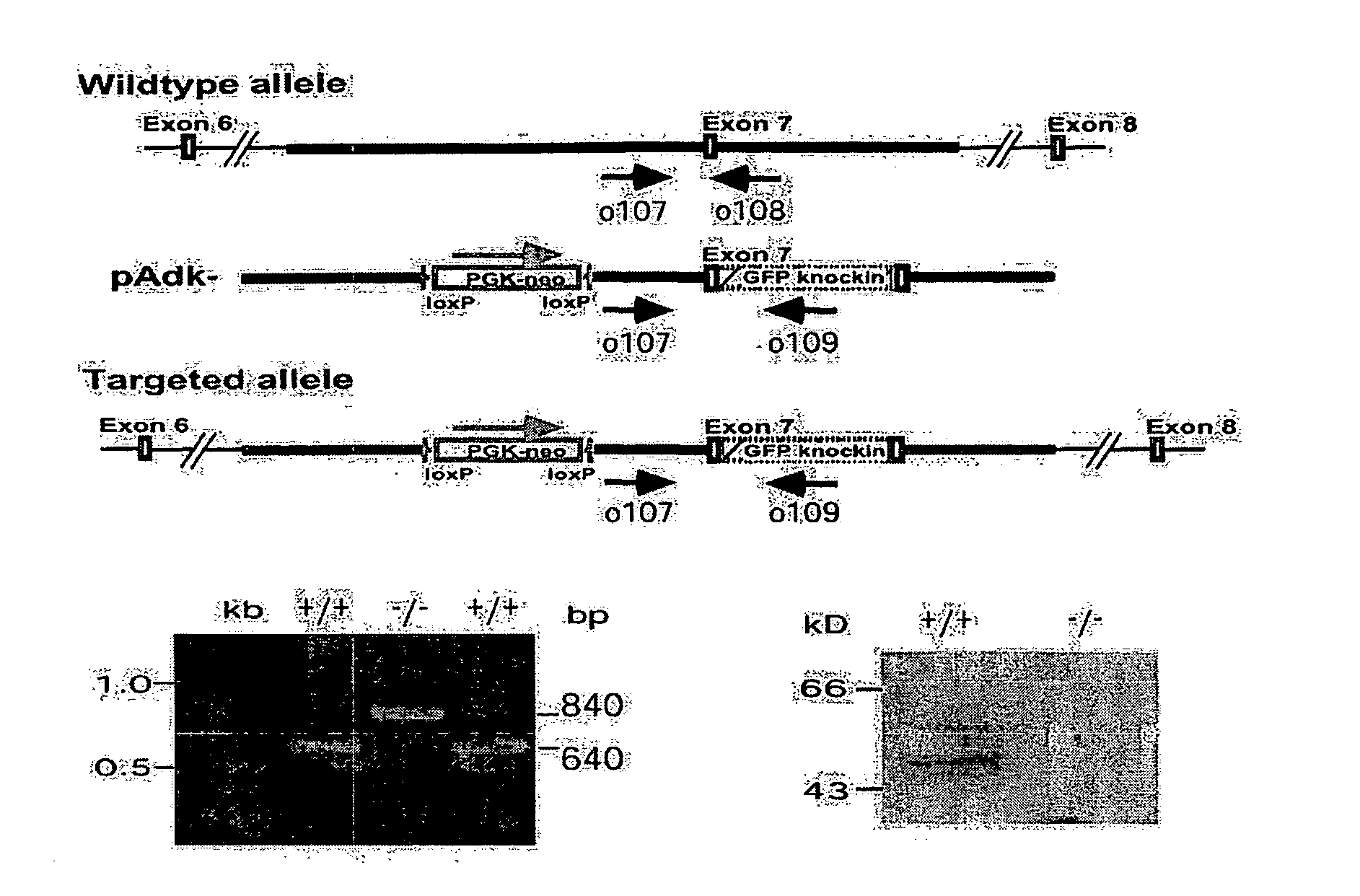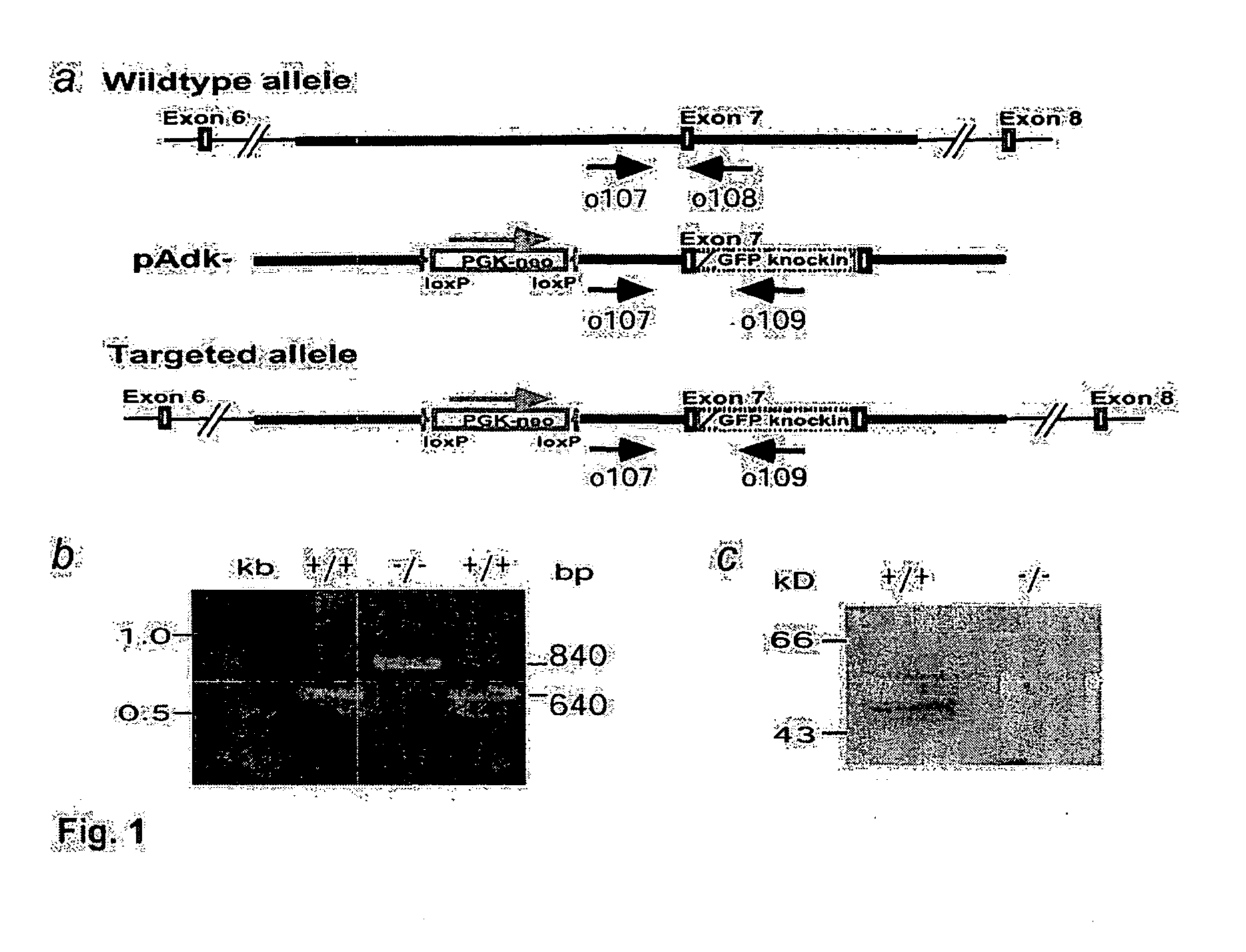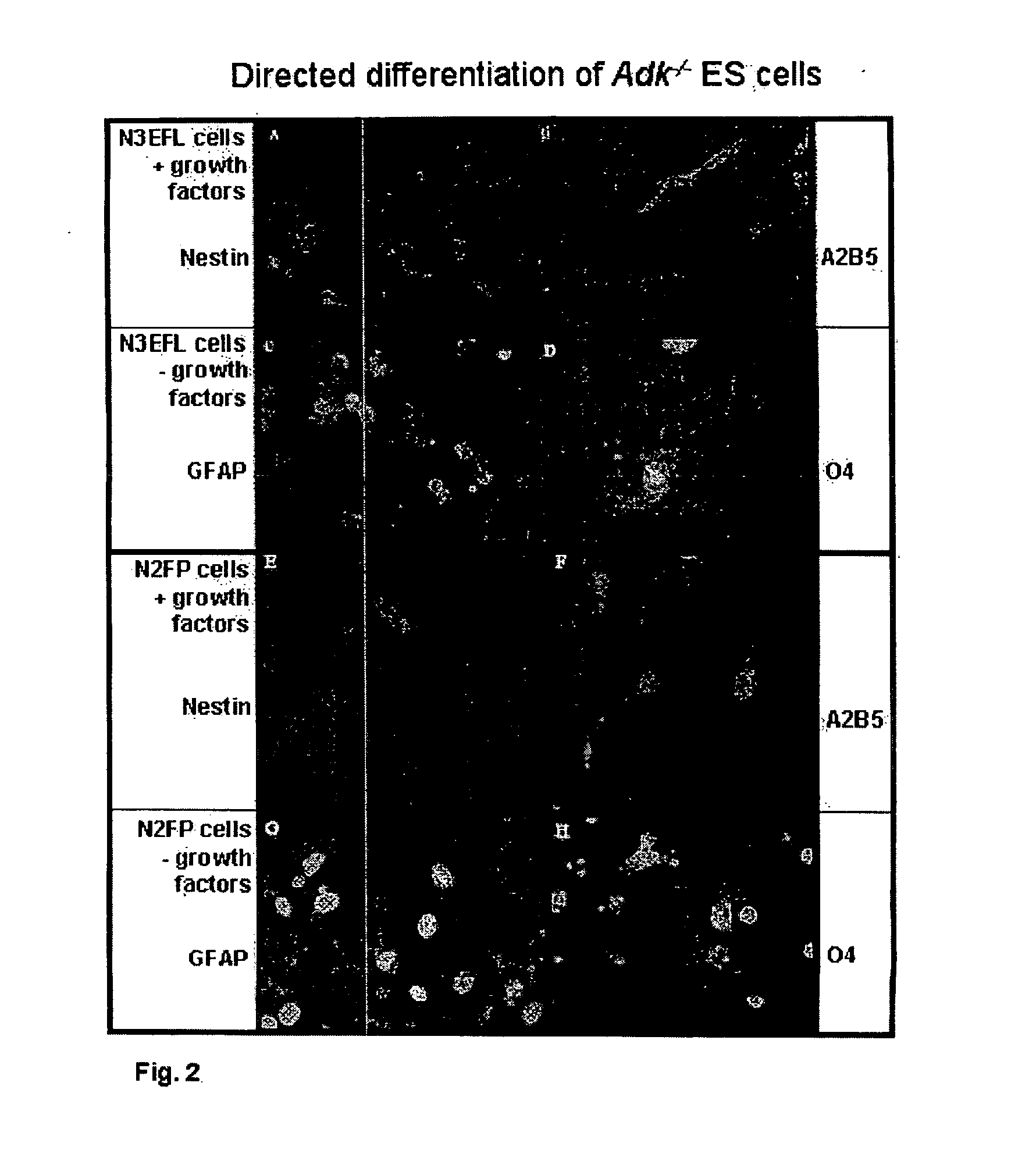Therapeutic delivery of adenosine into a tissue
a technology of adenosine receptor and therapeutic delivery, which is applied in the direction of nervous system cells, genetically modified cells, embryonic cells, etc., can solve the problems of adenosine receptor agonists with relatively low systemic doses, accompanied by adverse drug effects, and carries inherent morbidity and mortality risks
- Summary
- Abstract
- Description
- Claims
- Application Information
AI Technical Summary
Problems solved by technology
Method used
Image
Examples
example 1
Genetic Disruption of Adenosine Kinase in Mouse Embryonic Stem Cells
[0075] The isogenic replacement-type gene targeting vector pAdk− was used to disrupt one allele of the Adk gene in the mEMS32 line (Simpson et al., 1997) of embryonic stem cells. One correctly targeted clone was successfully used for the generation of an adenosine kinase knockout mouse (Boison et al., 2002b). The same clone was subsequently used for the genetic disruption of the second allele of Adk as follows:
[0076] A total of 107 cells heterozygous for the Adk knockout were again electroporated with 25 μg of the gene targeting vector pAdk− (FIG. 1a). Clones with a genetic disruption of both alleles of Adk were selected by using 6-methylmercaptopurine riboside (MMPR, Sigma, Buchs, Switzerland), a prodrug normally activated by ADK to form MMPR-5′-phosphate, which inhibits de novo purine nucleotide biosynthesis (Nord et al., 1996). Fourty hours after electroporation MMPR and guanosine as an enhancer for selection (...
example 2
Adenosine Release from Mouse ES Cell-Derived Glial Precursors and Glial Cells
[0082] For the analysis of the amount of adenosine released from ES cell-derived glial cells, single cell suspensions of N3EFL cells were plated at a density of 2.5-4×105 cells / cm2 onto poly-ornithine coated 6-well tissue culture dishes and cultured at 37° C. under 5% CO2. For half of the dishes, 24 hours after plating, the medium was changed to N2FP. For glial differentiation of both N3EFL and N2FP cells, the culture dishes were withdrawn from growth factors for a period of four days under the same experimental conditions. For sample collection, the medium was replaced with 1.5 ml of fresh medium that was pre warmed to 37° C. and two hours later 200 μL of medium was collected and immediately frozen at −20° C. for later adenosine analysis. After collecting samples, cells on 2 wells from a replicate plate were trypsinized, counted, and averaged and this count was used for normalization of quantity of adenos...
example 3
Differentiation of ES Cells into Neural Precursor Cells
[0102] ES cells [line J1 (Li et al., Cell, 69:915-926 (1992)), passage number no large than 17] were grown on γ-irradiated embryonic fibroblasts in Dulbecco's modified Eagle's medium (DMEM) containing 20% fetal bovine serum, 0.1 mM 2-mercaptoethanol, nucleosides, nonessential amino acids, and human recombinant leukemia inhibitory factor (LIF, Life Technologies; 1000 units / ml). Cells were passaged once onto gelatin-coated dishes and then aggregated to form embryoid bodies in the absence of LIF. We plated 4-day-old embryoid bodies in tissue culture dishes and propagated them for 5 days in ITSFn medium [DMEM / F12 supplemented with 5 μg / ml insulin, 50 μg / ml transferrin, 30 nM selenium chloride, and 5 μg / ml fibronectin (Okabe et al., Mech. Dev., 59:89 (1996))]. Cells were then trypsinized, plated in polyomithine-coated dishes (15 μg / ml), and propagated in DMEM / F12 supplemented with insulin (25 μg / ml), transferrin (50 μg / ml), progeste...
PUM
| Property | Measurement | Unit |
|---|---|---|
| thickness | aaaaa | aaaaa |
| temperatures | aaaaa | aaaaa |
| volume | aaaaa | aaaaa |
Abstract
Description
Claims
Application Information
 Login to View More
Login to View More - R&D
- Intellectual Property
- Life Sciences
- Materials
- Tech Scout
- Unparalleled Data Quality
- Higher Quality Content
- 60% Fewer Hallucinations
Browse by: Latest US Patents, China's latest patents, Technical Efficacy Thesaurus, Application Domain, Technology Topic, Popular Technical Reports.
© 2025 PatSnap. All rights reserved.Legal|Privacy policy|Modern Slavery Act Transparency Statement|Sitemap|About US| Contact US: help@patsnap.com



